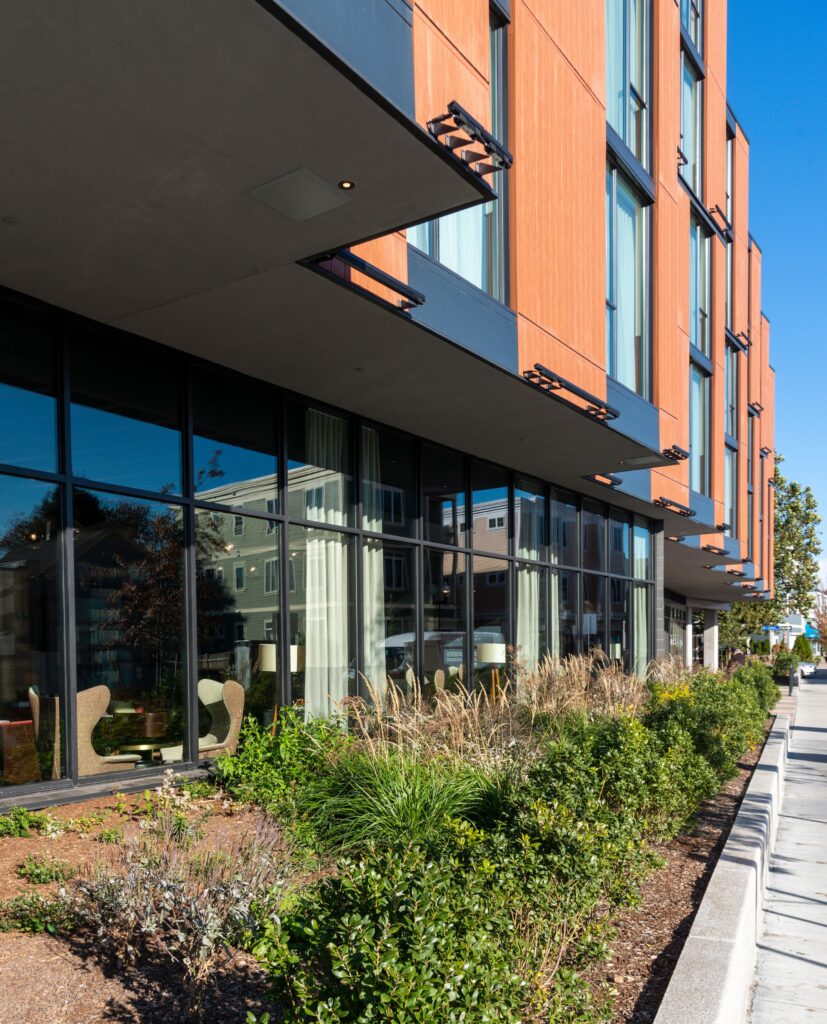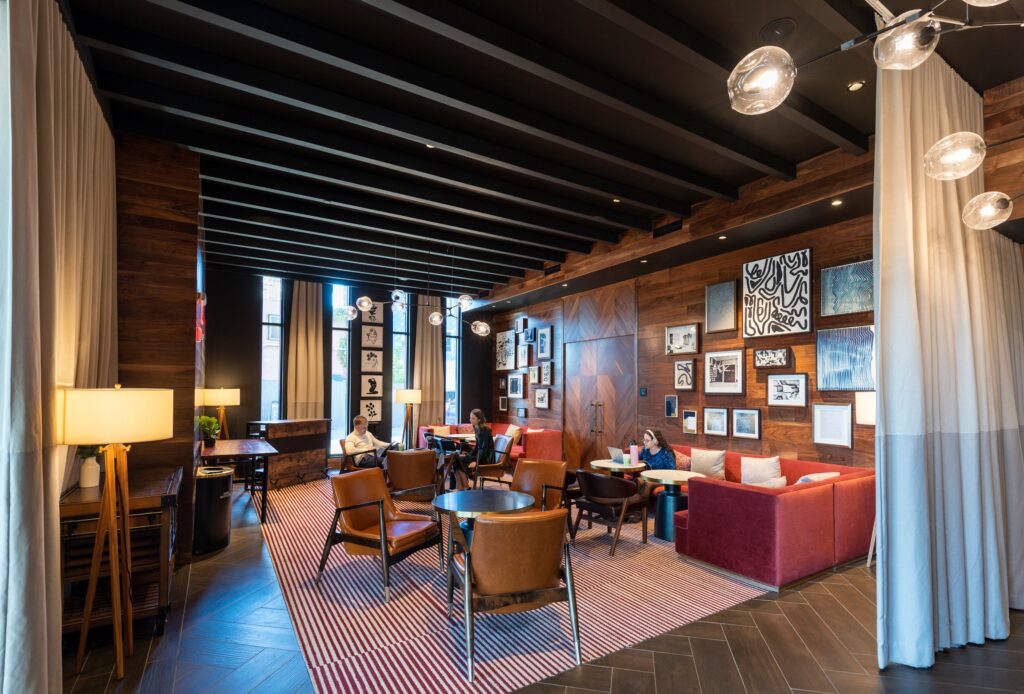CambridgeSeven was the architecture and design firm of record on the Cambria Hotel Boston Somerville, developed by The Noannet Group. Here, Jan Brenner, Associate Principal, AIA, CambridgeSeven, shares his experience working on the project and the overall design process.
How can architects and developers create hotel projects that fit into the local scene in a complementary and positive way?
It’s a design cue that is dependent on myriad things, but first and foremost a design brief and direction based on the local culture and community, which, if done properly, will elicit positive guest reviews.
A cookie-cutter approach does not do it. Consider the Cambria Hotel Boston Somerville, in Massachusetts, which opened in 2022. It is a unique example of “outside the box” thinking and illustrates that a chain hotel can seamlessly integrate into its surroundings by taking cues from the neighborhood.
Somerville is a densely-populated, ethnically-diverse enclave just three miles northwest of Boston. It is known for its bustling city squares, vibrant arts and culture and eclectic mix of neighborhoods. Despite its density, the city maintains (and fiercely defends) a small-town community feel in both engagement and scale. High-rise development, you won’t find here.
Somerville has seen a renaissance in recent years through the promotion of development and encouragement of innovation. The success of climate-tech startup incubator Greentown Labs, the long-awaited extension of Boston’s MBTA Green Line to Union Square and many contemporary housing developments along Somerville Avenue are examples of why the city is one of the hottest Boston area development markets. Add to that a vibrant restaurant scene, local breweries and a bustling art community and you have the right mix to attract a growing residency of young professionals. Improvements in infrastructure and public schools have followed the recent growth.
These attributes are what led developer Jordan Warshaw of the Noannet Group to set his sights on a spot just outside Union Square for one of the newest Cambria hotels.

DESIGN BRIEF
From the outset, Warshaw expressed an interest in tapping into and taking advantage of Somerville’s rich heritage and eclectic local culture.
We realized quickly that a typical formulaic hotel design would not work on this site. As architects, CambridgeSeven saw an exciting opportunity with the Cambria Somerville to embrace this Choice brand’s ethos of “modern, approachable and stylish” in creating a unique place with the right vibe. When designing the new Cambria, CambridgeSeven was keenly aware that it made business sense for this hotel to be differentiated and draw visitors who might otherwise stay in Boston or Cambridge. We had an urban location and a vibrant street life with which to engage. The hotel needed to be part of the street and not separated from it—both to be a good neighbor and amenity and to capitalize on the best parts of the locale.
Design ideation began with the oblique angle of approach along Somerville Avenue, allowing us to create a façade that compliments the existing streetscape in scale and volume without being too literal in matching style and materiality. Existing bay windows along the street edge suggest a variegated texture that catches the natural light and shadow. In addition, various existing brick buildings interspersed along Somerville Avenue give a warm terracotta color tone to the neighborhood; we proceeded with a contemporary translation of these existing conditions.

Our façade design features a textured, terracotta-colored cement panel cladding in a staggered pattern. This also enabled a slight pivot for the individual rooms, popping them out of the façade to add side windows that bring in more light and offer more expansive views. From the exterior, this creation of vertical triangular bays breaks up the long façade and gives it depth and rhythm similar to the existing bay windows along the street.
The first-floor lobby and restaurant were recessed away from the street edge to create a pedestrian-friendly public space. A green scape with lush landscape and tree plantings was incorporated. A glass wall provides inside-to-outside connectivity, energizing the sidewalk view, while the outdoor seating area mirrors other local outdoor Somerville hot spots, including the home-grown Aeronaut Brewery, a nearby taproom with a welcoming outdoor courtyard.
The interior hotel lobby design is also very much in keeping with the unique locale and neighborhood vibe. While still adhering to certain brand design standards, such as incorporating a lobby market, CambridgeSeven pushed the boundaries in concert with Choice Hotels to reinterpret for a local design sensibility. Working with interior designer Bill Rooney Studios, we created a warm and distinctive interior that diverged from standard lobby finishes by incorporating natural wood, dark and warm colors and rich textures. Custom, free-form pendant light fixtures are mounted to a black ceiling and bespoke, cozy furniture provides ample seating. The contemporary artwork, displayed salon-style, and book-laden shelves create a feeling of an urban living room as opposed to a typical transient hotel lobby.
The Cambria Somerville has already become a destination in the community, reflecting the local energy and vibe. It complements and supports the existing traits of the neighborhood and still projects its own unique style in a winning combination for both the city and the Cambria brand.


Story contributed by Jan Brenner, Associate Principal, AIA, CambridgeSeven.